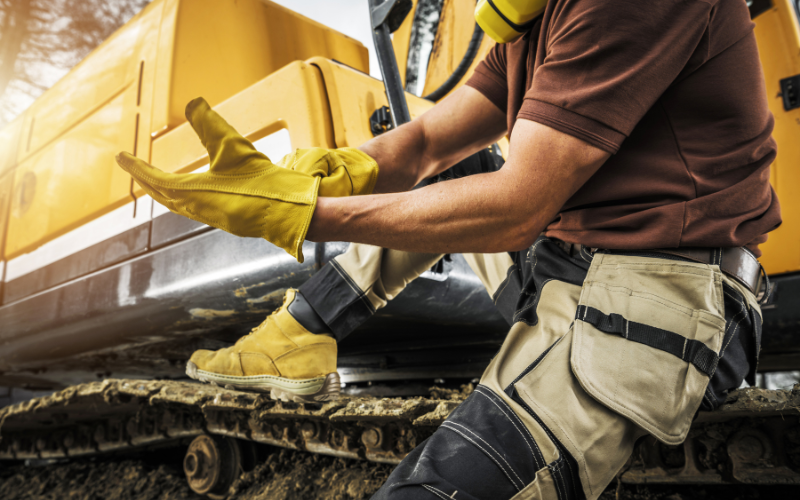The Hidden Risks of Workplace Safety Gear in Singapore
Workplace safety gear is critical for protecting workers in hazardous environments. However, even the best equipment, such as safety shoes, gloves, and helmets, can introduce risks if not used or maintained correctly. This article highlights hidden dangers associated with workplace safety gear and offers actionable solutions to ensure optimal protection.
1. Poorly Fitting Safety Shoes
Safety shoes in Singapore are designed to protect feet from heavy impacts, punctures, and slips. However, ill-fitting footwear can cause discomfort, blisters, and even long-term foot problems. Workers wearing poorly sized shoes may experience reduced mobility, increasing the likelihood of accidents.
To avoid these risks, always prioritise proper sizing when purchasing safety shoes. Conduct fittings to ensure a secure yet comfortable fit and replace worn-out shoes promptly to maintain safety standards.
2. Worn-Out or Inadequate Safety Gloves
Safety gloves in Singapore protect hands from cuts, chemicals, and other workplace hazards. However, using gloves that are not suited to the task or are in poor condition can lead to injuries. For example, wearing standard gloves for tasks requiring cut-resistant gloves leaves workers vulnerable to lacerations.
Regularly inspect gloves for wear and replace them as needed. Ensure workers use gloves appropriate for their specific tasks, such as cut-resistant gloves for handling sharp materials or insulated gloves for electrical work.
3. Misuse of Construction Safety Helmets
Construction helmets, or hard hats, shield workers from falling objects and head injuries. However, improper use or negligence can reduce their effectiveness. Workers may fail to adjust the helmet correctly, wear it backwards, or neglect to replace it after damage.
Educate employees on the proper use of hard hats and enforce regular inspections. Replace helmets that show signs of cracks, dents, or other wear to ensure they provide maximum protection.
4. Overlooking Maintenance of Gear
Regular maintenance is essential for all safety equipment, yet it is frequently overlooked. Dirt, grime, and moisture can degrade materials over time, reducing the effectiveness of items like gloves, helmets, and shoes. For instance, a construction safety helmet exposed to extreme heat may lose its structural integrity, while safety shoes stored in damp conditions may develop mould.
Implement a maintenance schedule that includes cleaning, drying, and storing gear in proper conditions. Ensuring all equipment remains in optimal condition minimises the risk of failures during use.
5. Ignoring Expiry Dates on Safety Gear
Many safety items, including helmets and gloves, have expiry dates or recommended replacement periods. Using gear beyond its lifespan compromises its protective capabilities. For example, hard hats often degrade over time due to exposure to sunlight and chemicals, even if they appear undamaged.
Track and adhere to expiry dates for all safety equipment. Mark items with clear labels to remind workers when replacements are needed, ensuring continuous protection.
6. Lack of Proper Training on Usage
Providing safety gear is insufficient without proper training. Workers who do not understand how to use or adjust their equipment may inadvertently increase their risk of injury. For example, an improperly fastened hard hat may fall off during an accident, leaving the worker exposed to further harm.
Incorporate training sessions on the correct use and maintenance of safety gear into workplace routines. Refresher courses should be conducted periodically to address knowledge gaps and reinforce proper practices.
7. Inadequate Communication About Safety Risks
Workers are sometimes unaware of the potential risks associated with using improper or damaged safety gear. Employers failing to communicate these risks leave their teams vulnerable to avoidable accidents.
Establish open communication channels to discuss safety concerns and share updates on best practices. Regular meetings and visual aids, such as posters or infographics, can help reinforce the importance of proper safety gear usage.
Conclusion: Stay Vigilant to Hidden Risks
Even the best safety gear poses risks if used incorrectly or neglected. By addressing hidden dangers, such as poor fit, lack of maintenance, or insufficient training, employers can enhance workplace safety and protect their teams from harm. Taking proactive measures ensures that safety shoes, gloves, helmets, and other gear provide the protection workers deserve.
For high-quality safety gear, including safety gloves, shoes, and helmets, contact Safetysam today to ensure your workplace meets the highest safety standards.






